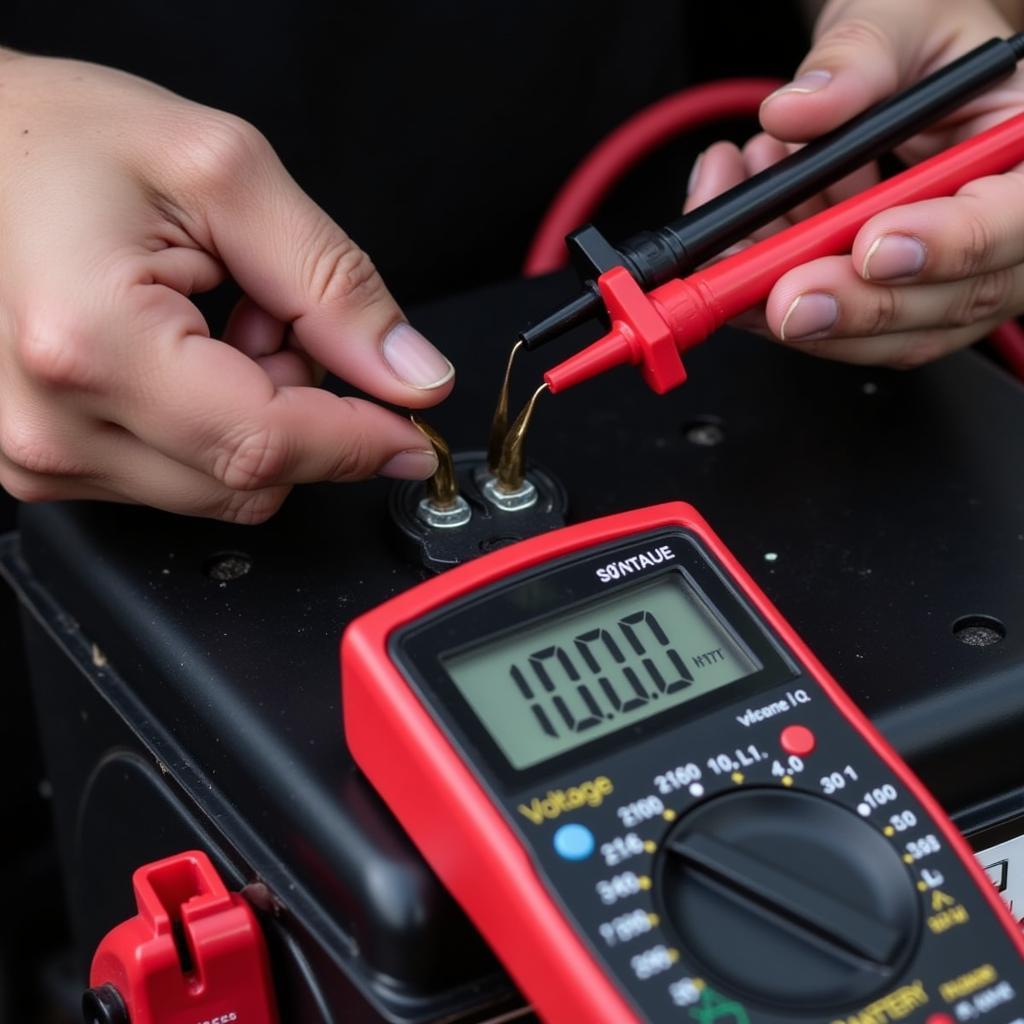A new car battery completely dead can be incredibly frustrating. This comprehensive guide explores the reasons why a new battery might fail and provides practical solutions and troubleshooting steps to get you back on the road. We’ll cover everything from simple checks to more advanced diagnostic techniques.
Why is My New Car Battery Completely Dead?
Several factors can lead to a new battery completely dead. It’s important to systematically investigate the potential causes to identify the root of the problem. Some common culprits include faulty installation, parasitic drains, defective alternators, and even extreme temperatures. Don’t immediately assume the battery is at fault; the issue might lie elsewhere in your vehicle’s electrical system.
Checking for Obvious Issues
Before diving into more complex diagnostics, start with the basics. Inspect the battery terminals for corrosion or loose connections. A simple cleaning with a wire brush or baking soda solution can often resolve connectivity problems. Also, check the battery cables for any signs of damage or fraying.
Testing the Battery and Alternator
A multimeter is your best friend when dealing with electrical issues. Use it to check the battery voltage. A fully charged battery should read around 12.6 volts. If the reading is significantly lower, the battery may have discharged or be faulty. Next, test the alternator. With the engine running, the voltage should increase to around 14 volts. A lower reading suggests the alternator isn’t charging the battery properly.
 Testing Car Battery with Multimeter
Testing Car Battery with Multimeter
Identifying Parasitic Drains
Parasitic drains are electrical components that continue to draw power even when the car is off. These can slowly drain your battery over time, leading to a new battery completely dead scenario. Common culprits include interior lights, faulty door switches, and aftermarket accessories. Use an ammeter to measure the current draw with the ignition off to pinpoint any excessive drains.
How to use an ammeter to detect a parasitic drain?
Disconnect the negative battery terminal and connect the ammeter in series between the negative terminal and the negative battery cable. Observe the ammeter reading. A small drain (less than 50 milliamps) is usually acceptable, but a higher reading indicates a significant parasitic drain.
Addressing the Underlying Issue
Once you’ve identified the cause of the dead battery, take the appropriate steps to address it. This could involve tightening loose connections, replacing a faulty alternator, or disconnecting a parasitic drain. If the battery itself is faulty, even if it’s new, it might need replacing under warranty.
What if my new battery is still under warranty?
Contact the retailer or manufacturer where you purchased the battery. They should be able to test the battery and replace it if it’s determined to be defective.
Preventing Future Battery Problems
Regular maintenance can help prevent future battery issues. Keep the battery terminals clean and free of corrosion. Limit short trips, as these don’t give the alternator enough time to fully recharge the battery. And, if you notice any electrical issues, address them promptly to prevent them from escalating into bigger problems.
John Smith, a seasoned automotive electrical technician, emphasizes, “Regular battery maintenance is key to avoiding unexpected breakdowns. A simple cleaning of the terminals can go a long way.” He also advises, “Always have a set of jumper cables handy, just in case.” Furthermore, he reminds us, “Don’t ignore warning signs like dimming headlights or slow engine cranking, as these can indicate a failing battery or charging system.”
Conclusion
Dealing with a new battery completely dead can be frustrating, but by following these troubleshooting steps, you can identify the cause and get your car back on the road. Remember to perform regular maintenance to prevent future battery problems and ensure reliable starting.
FAQ
-
Can a brand new battery be completely dead? Yes, a new battery can be dead due to various factors, such as manufacturing defects, improper storage, or issues with the vehicle’s electrical system.
-
How long should a new car battery last? Typically, a new car battery should last between three to five years.
-
How do I jump-start a car with a dead battery? Carefully connect jumper cables between the positive and negative terminals of the dead battery and a good battery.
-
What should I do if my new battery keeps dying? Have a professional mechanic diagnose the problem to identify any underlying issues with your vehicle’s charging system or electrical components.
-
How do I know if my alternator is bad? Symptoms of a bad alternator include dimming headlights, flickering interior lights, and a dead battery.
-
Is it safe to drive with a bad alternator? It’s not recommended to drive with a bad alternator as it can eventually lead to a complete electrical system failure.
-
How much does it cost to replace a car battery? The cost of a car battery replacement varies depending on the make and model of your vehicle, but typically ranges from $100 to $300.

